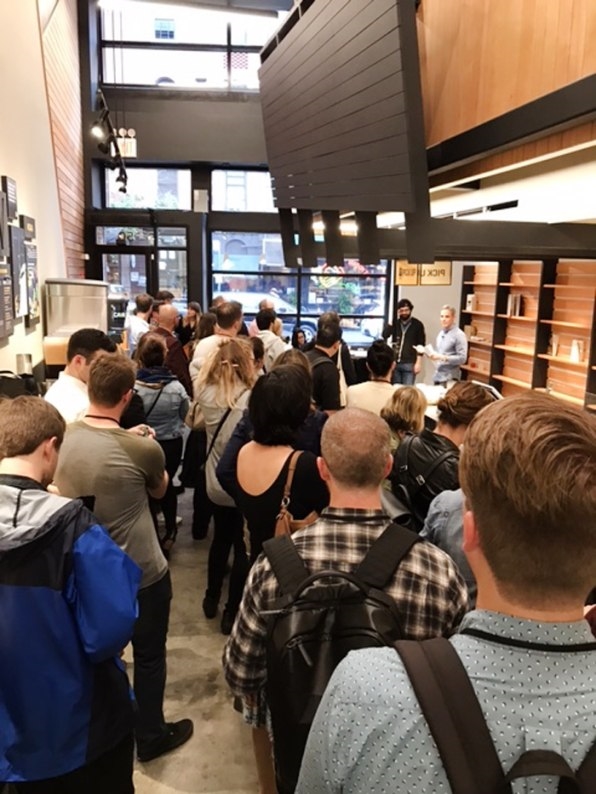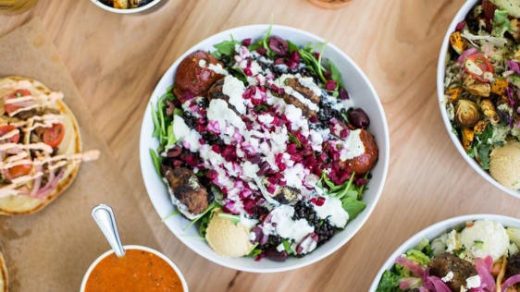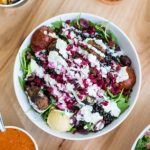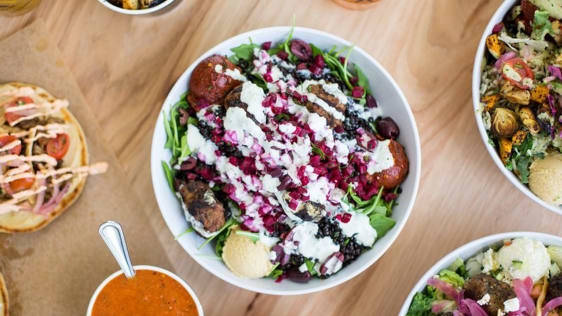Sensors And Data Help Restaurant Chain Cava Know What Its Customers Want Most
Over the last year, Cava, the Mediterranean-style fast-casual restaurant chain, has nearly doubled in size. It projects to have 40 restaurants open by the end of 2017–there were just 21 at this point a year ago–with eateries in its home market of Washington D.C., along with New York, Los Angeles, and New Jersey.
A big part of the company’s success can be attributed to its use of data to enhance restaurant design. Cava deploys a wide array of sensors throughout some restaurants, which help track both kitchen operations and how customers move about. This data collection has led to refinements that reduce congestion in Cava’s food-ordering lines and improve food safety, among many other things.
Next up, Cava plans to harness store data in to tackle something more amorphous: brand loyalty. The company will launch what they hope will be an intuitive customer loyalty program next year, CEO Brett Schulman told a crowd that gathered inside a new Cava location in New York during the Fast Company Innovation Festival.

As part of the new program, the company will likely track what customers order in-store, then send that data to a preference engine that could signal what other deals or rewards might be on point for that individual. “We’re really focused on creating a personalized one-on-one experience,’ Schulman added, noting that while Cava may have great meatballs, offering everyone a blanket deal on those products wouldn’t play well with customers who are vegetarians.
The system might sift through people’s past ordering preferences to spot, say, eaters who consistently love harissa–a signature sweet and spicy dip with stewed tomatoes and crushed red pepper–to send harissa loyalists a coupon so they can pick up more of the good stuff at Whole Foods, which currently carries many of Cava’s dips and spreads. That deal could, theoretically, be paired with at-home recipes for using the ingredient in new ways too. While the exact design hasn’t been announced yet, customers would gain access through a mobile-based app, allowing promotions to reach them via their mobile devices.
“Just like our line is set up where you can build your meal to your dietary needs and preferences—so you don’t have to conform to our menu, our menu conform to you—we want it to be the same way with our communications with you,” Schulman said, while standing next to Cava’s Chief Data Scientist Josh Patchus, who joined him for the talk. At Cava, customers can customize their meals the same way they pick and choose ingredients when ordering at Chipotle or Subway. (The exact release date for the new customer loyalty program hasn’t been decided, but will likely happen sometime next year.)
With a customer loyalty program like this, Cava will have a chance to reaffirm its grocery venture, which actually launched ahead of the fast-casual chain. The company started with Cava Mezze, a full-service restaurant, in 2006 (there’s now five locations throughout Washington D.C., Maryland, and Virginia). It began selling individual dips and spreads in grocery stores two years later, in 2008. Its first fast-casual restaurant arrived in 2011.
In addition to possibly delighting customers with store deals that feel intuitive and personal, a new loyalty program could be a way to build a more intentional restaurant and retail connection. To that end, the company closed a $30 million Series C investment round in March, reportedly to fuel store expansion and the growth of its branded dips and spreads line in grocery stores. In addition to Whole Foods, the product line is also available at some specialty grocery stores like My Organic Market and Balducci’s, although there are still some gaps in the national coverage. By 2018, Cava expects to have restaurants in Boston, Charlotte, and Austin–cities that already host Whole Foods locations that don’t yet sell Cava dips. By using a brick-and-mortar store to introduce more people to the product, the company may spur demand at those stores.
“The goal is to make loyalty as valuable as possible,” says Patchus of the new program. “Customers aren’t going to use things because you want them too,” he added, noting that the idea of a broadly targeted, frequency-based system offering a “free X every so often” feels outdated.
“If you keep following the model, you’re narrowing the model,” Patchus added about the group’s overall philosophy about innovation. But data-driven design thinking “allows you take a risk, hopefully, that’s successful and then you can broaden it out.” As with everything Cava does, it will likely continue to test, measure, adapt, and perhaps profit accordingly.
Fast Company , Read Full Story
(37)












